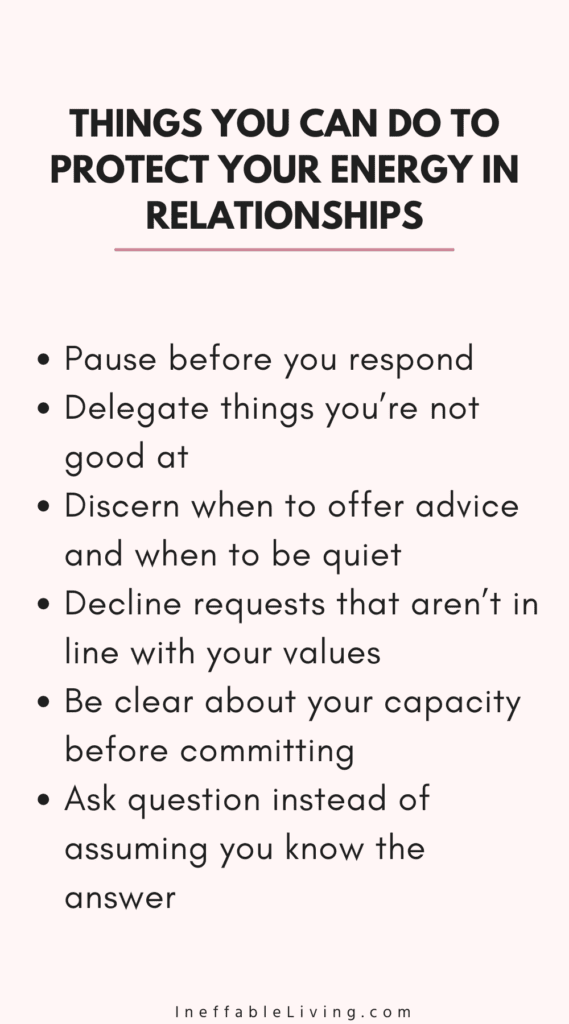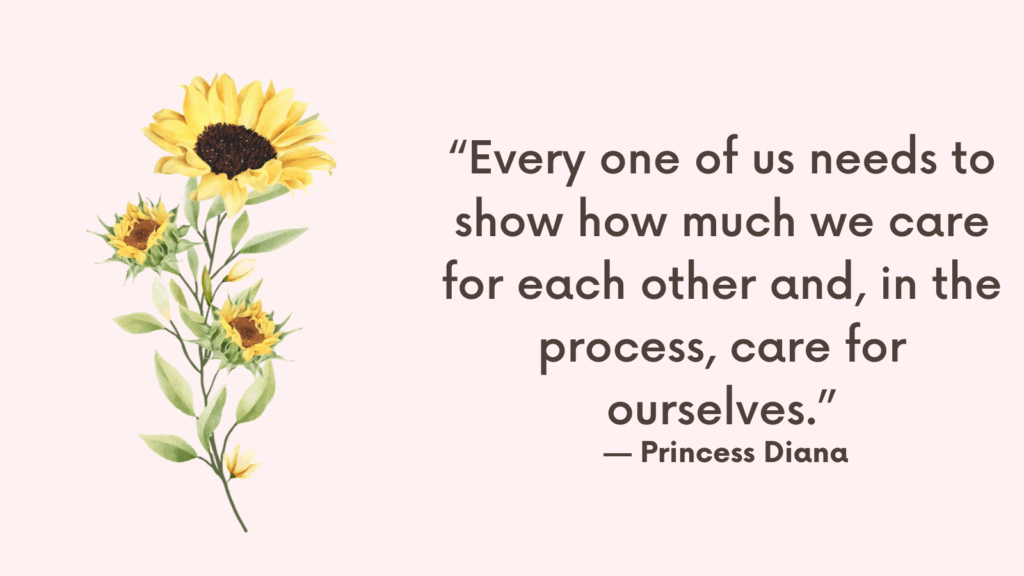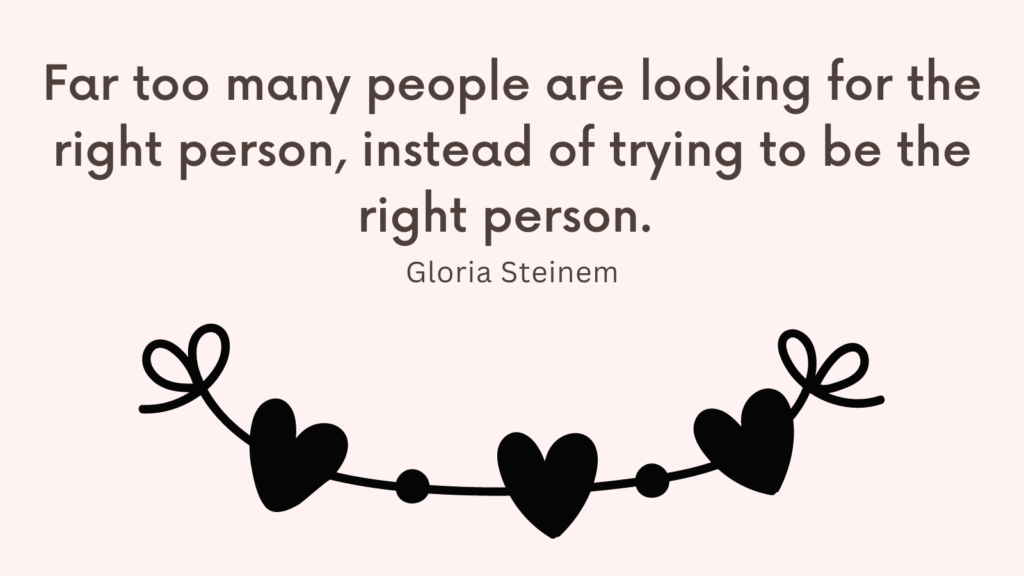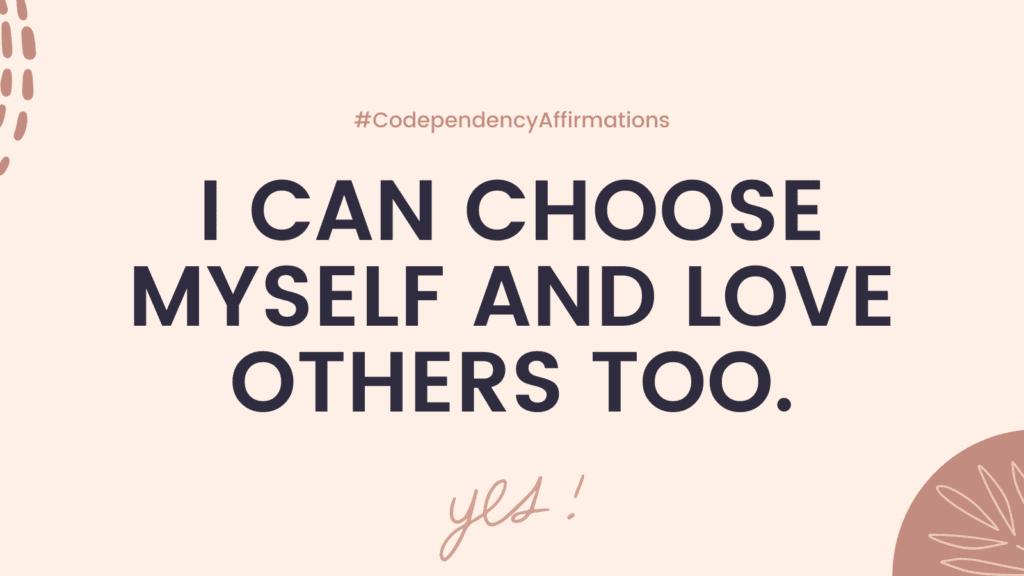Today, you’re going to learn how to receive more in life and relationships.
Do You Struggle to Receive?
Consider the following statements. Do any of them describe you?
- You are the one people turn to when they need help. You can’t have time for yourself without having to leave e-mails and phone calls unanswered.
- People in your life complain that you’re always working and never spending enough time with them.
- You have a hard time taking a vacation or relaxing when you take one.
- You have a job where you help others (nurse, social worker, teacher, etc.) and feel worn out most of the time.
- You feel unappreciated, exhausted and resentful.
- You find yourself turning away what people offer you, whether it’s picking up the check at lunch, a compliment, or even an apology.
- You find yourself thinking – or even saying – things like “People are taking advantage of me,” or, “I’m not getting what I want,” or, “I feel taken for granted,” or, “I can’t count on anyone,” or, “I don’t know what I want.”
If some of the above examples sound familiar and you can’t remember when you last felt rested and fulfilled – keep reading.
Why Do We Need To Receive?
“Whatever We Don’t Include, We Marry, Go To Work For Or Give Birth To”
Each one of us has unhealed parts alone with the healed, valued, and easy to embrace components of our personality.
These scared parts go with us wherever we go. Just because we try to disown them and refuse to acknowledge them, doesn’t mean that they’ll disappear. And this is one of the reasons why those who don’t know how to receive would end up with those who don’t know how to give.
By learning how to receive and embracing all aspects of who you are, you prevent yourself from getting involved in unhealthy relationships that are going to leave you feeling emotionally drained and resentful.
Moreover, allowing yourself to receive, is also a powerful expression of self-love.
Why We Struggle to Receive?
People, who are inexperienced receivers, have negative beliefs about receiving that goes like the following:
* Wanting something for myself is selfish and greedy.
* I shouldn’t burden others with my troubles.
* People who achieve success while enduring hardship and without help are admirable.
* It’s not okay to ask for what I want unless it doesn’t make others uncomfortable, upset, or angry and it doesn’t interfere with what they want for themselves.
On the other hand, if you are the one who is giving, it’s easy to see how silly it is for someone to refuse your help.
The Difference Between A Taker And A Receiver
“For every Giver, there is a Receiver. For every Doer, there is a Taker.”
Many people don’t distinguish between doing something because we want to do it, and doing something because we believe we have to do it.
Even when you do something because you want to do it, you’re not the only person who’s giving. The attitude of gratitude that the other person has is one of the ways a receiver gives back to the giver.
However, with doers and takers, it is a one-sided equation. The energy goes out in doing with nothing coming back.
The doer in this relationship, usually, ends up feeling drained and resentful.
Even when experiencing these feelings, many people continue to give, not because they feel a genuine desire to do so, but because of their internal expectation that “one should behave”.
It’s easy to blame others when you feel like you’re the only one who’s giving, but consider the following statement:
“The only possible match for someone who doesn’t know how to receive is someone who doesn’t know how to give.”
The reason why you have been drawn to non-givers is that you are an inexperienced receiver.

How To Receive More In Life And Relationships?
#1. Change Your Old Definitions
To become a receiver, the first thing you need to do is to let go of your old definitions of giving and receiving.
1. A Receiver Is Not A Doormat
Many people confuse receiving with passivity.
To be passive means “to be influenced or acted upon without exerting influence or acting in return.” In contrast, receptivity is a dynamic and energized state, where we are actively engaged and interested.
2. Enabling Is Not Giving
When you help someone as a favor and they continue to expect the same assistance, you are enabling rather than giving.
Enabling is when you habitually do something for those who are perfectly able to do it for themselves, or when you do something that prevents others from experiencing the consequences of their own actions.
A mother who constantly picks up after her child, rather than teaching him to put his things away, is enabling and not giving.
A person who covers for her coworker’s habitual tardiness by doing that person’s work is enabling and not giving.
3. If I Accept The Gift, I Owe The Giver
The concern about creating an obligation when accepting a gift is an issue for many people.
The truth is, most people offer help knowing that the other person can’t reciprocate and most of the time this is the reason why they would offer the help in the first place.
Giving is not expecting something in return, but rather passing on kindness to someone other than the one who gave you.
Moreover the gate of giving and receiving swings both ways. When you receive you’re giving back appreciation and gratitude, and that in itself is giving.
#2. Challenge Your Negative Beliefs Using CBT
Cognitive Behavioral Therapy (CBT)
Cognitive Behavioral Therapy (CBT) is one of the most famous empirically validated treatments, originally created by psychoanalyst Dr. Aaron T. Beck in the early 1960s.
CBT focuses on solving problems by changing the unhelpful thinking and behavior patterns that reinforce them.
The fundamental principle of CBT is that our thoughts impact our emotions, which then influence our behaviors.
In this sense, how we think about a life event—or “trigger”—will impact our lives.
An event can be interpreted in countless ways, some of which are not helpful.
CBT helps you identify negative beliefs and thoughts, also known as “cognitive distortions” and replace them with more realistic, helpful ones.
Who Can Benefit From CBT?
CBT was first developed to treat depression, but it has since been adapted to treat a number of mental health issues, including anxiety, PTSD, addiction (both substance abuse and behavioral addiction), etc.
What Are Automatic Thoughts?
In CBT, an automatic thought refers to random thoughts that simply pop into your head without any effort.
According to an article published by the National Science Foundation in 2005, an average person has about 12,000 to 60,000 thoughts per day. 80% of those are negative.
Cognitive distortions are automatic negative thoughts that are not based in fact and can reinforce our distress.
For example, we may text a friend and not get a reply right away. An automatic thought might be, “He is totally ignoring me. He must not like me.”
1. Identify Your Negative Thoughts
Negative automatic thoughts can be verbal or visual, such as visualizing a car crash every time you get in the car.
Such thoughts are not based in fact; rather, they are distortions of reality that can greatly affect our views of self, others, and the world and contribute to more suffering.
A good way to identify cognitive distortions is to observe when you are having a strong emotional experience.
When you are feeling an intense emotion about something, you may be engaging in cognitive distortion that’s intensifying your emotions.
Pause and explore what emotion you’re experiencing, and what skewed thoughts you may be having.
2. Cognitive Restructuring: Challenge Your Negative Thoughts
Cognitive restructuring is the process of challenging negative thinking.
Psychologist Albert Ellis described the process of challenging negative thoughts as “disputing irrational belief.”
Ellis’ created a systemic way to change irrational beliefs (IBs) or “to rational beliefs (RBs) by assessing the facts of a situation that lead to your distorted thoughts.
Ellis would ask, “What is the evidence to support your distorted thought?”
Another way to challenge negative beliefs is to think about the consequences of holding onto your negative thinking.
For example, you may believe that saying no to people may make them abandon you.
You may ask yourself, “What will happen in my life if I continue to believe that people will abandon me if I assert myself and say no to their requests?”
You may find out that this belief is causing you so much internal conflict, stress, strain in your intimate relationships, etc.
In this case, you can reinforce your ability to cope with disappointment.
In the same example, you may think, “I prefer to be abandoned by people who don’t respect me or want the best for me, then live in conflict with myself.”
#3. Receive Everything—Decide Later
Receivers have healthier boundaries than those who do not know how to receive.
Just as a Giver doesn’t feel compelled to do everything that is requested, a Receiver doesn’t feel obliged to do, think or say anything that doesn’t feel right.
Experienced Receivers, receive all the information about their environment, including the inner environment of their feelings. Then they decide what they want to do with what they have received.
Many people pay attention to what they want to hear and see instead of what is actually being said and shown. They end up making wrong decisions.
The following are some examples of statements from non-Receivers:
* She promised that for sure this year she’d leave her husband.
* He’s a good kid. He didn’t mean to beat his friend.
* He didn’t mean to hit me.
When someone is continually making excuses for another’s behavior or is baffled by the consequences of his own or someone else’s actions, this indicates that he’s blocking information.
The following are some examples of why would anyone want to block information:
- Not wanting to experience their feelings
- Not wanting to disappoint others
- Wanting to avoid conflict
When you’re unfamiliar with the language of your feelings, it’s a sign that you’re blocking information and aren’t being receptive.
Use the statement Receive everything—decide later to remind yourself to pause, observe and give yourself time before deciding.
#4. Accept All Compliments
There is a strong connection between what you are willing to receive and what you are actually getting.
Many people are unwilling to receive the simplest thing in life, while at the same time having huge expectations.
Receiving takes practice. This is why “receiving all compliments” a good place to start to practice receptivity. If you start with the smaller things, you will soon feel more comfortable receiving the bigger ones.
When someone gives you a compliment accept it graciously. If someone says, “I love your shirt. It looks great on you!” don’t say, “This old rag? I got it at the thrift shop for two dollars.”
Simply thank them!
#5. Look For Opportunities to Thank People
Be genuinely appreciative. Celebrate the small acts of kindness you receive every day and look for opportunities to thank people.
Here are a few ideas to get you started:
- Thank the grocery clerk for offering to return your cart.
- Thank the salesperson for saying, “Have a nice day.”
- Thank the driver who waves at you to go first at the stop sign.
- Thank the waiter for bringing your lunch.
- Thank your friend for saying they like your shoes.
- Thank your coworker for saying, “Have a great weekend.”
- Thank your cat for using the litter box.
- Thank your houseplants for their beauty.
#6. Count Your Blessings
Gratitude, being a receptive state, is one of the best ways to strengthen your “Receive Muscles”. The more grateful you are, the more you receive.
When you show gratitude to someone, they don’t just feel appreciated, but they are also inspired to give again.
Gratitude is an attitude that comes from within. It takes “you” to notice something that you can be grateful for. It is completely independent of external circumstances.
These things are everywhere around you. There are no degrees of gratitude. Whether you are grateful for a success, or for the beautiful tree outside your window, your brain registers gratitude.
Start a gratitude journal where you write down, each day, at least five things for which you feel grateful.
Here are a few examples:
- I am filled with thanks for my morning coffee.
- I so appreciate my beautiful houseplant.
- I am grateful that my partner received a job promotion.
- I am grateful that my child is content in his life.
- I feel extraordinarily blessed for my home.
- I am grateful for my health.
But gratitude doesn’t just involve being grateful for your qualities and positive events. It also includes being grateful for the painful experiences.
The following are some examples:
- I am grateful I was able to feel my grief.
- I am thankful that I am noticing how much I’m putting myself down with my negative self-talk.
Related: Daily Gratitude Ideas: 10 Ways to Practice Gratitude Every Day
#7. Be Emotionally Naked
To be emotionally naked means to be self-revealing. This means that you’re willing to express not only the healed and healthy parts of your personality, but also the vulnerable, lost, wounded, and lonely parts.
If you’re able to embrace your wholeness, others will, too. It’s hard to relate to and connect with those who come across as if they are totally “together” and have it all “figured out”. Instead, we bond wither those who come across as being as human as we are.
Being open and honest about all of who you are, not only connects you with others but also allows you to receive more. It’s only when you reveal yourself that the other person would know how to be there for you.
At the same time, this doesn’t mean that you don’t practice good judgment or have healthy boundaries. When a salesperson asks you how you are, you don’t tell them about the tough day you had because of your boss’s demands.
The following is an example of how you can expand your capacity to receive by showcasing your wholeness:
Friend: Do you prefer being single?
Old You: I don’t need anyone to complete me! I’m very content by myself.
New You: I love my independent nature, but to be honest, it would be great to be in a loving relationship.
In revealing your interest in being in a relationship, you allow your friend to connect with you and give her an idea of how she can help.
Your friend may know someone who’s looking for a serious relationship and present you to them.
Related: Regulate Your Emotions: How To Manage and Control Your Difficult Emotions?
#8. Open Up To Your Desires
Do You Know What You Want?
Most people who feel like they’re not getting what they want, don’t know what they want in the first place.
In fact, they find it much easier to state at length what they don’t want than to articulate what they really want.
Opening up to your desires takes time, attention, and intention. Wanting something for yourself might feel uncomfortable at first, but with some practice, it’ll feel more natural.
The Risk of Rejection
Asking for anything invites the risk of rejection and disappointment, which is fine. Expecting to get everything you ask for is unrealistic. Healthy relationships aren’t about getting everything you want and ask for.
The point of opening up to your desires and asking is to become comfortable with the fact that you have needs and state them.
Related: How To Save Your Relationship From A Breakup? 5 Steps To Strengthen Your Relationship

#9. Learn to Be Assertive
There are three basic styles of communication: passive, aggressive, and assertive.
People often confuse assertiveness with aggressiveness. Many associate being assertive with being demanding and self-serving.
It is possible to be both assertive and kind.
Assertiveness is direct, calm, and respectful. It helps you directly express your feelings and needs in a way that doesn’t violate those of others.
Barriers to Assertiveness
Not feeling worthy
It’s hard to stand up for yourself and what you believe in when you don’t believe that your needs and opinions are important.
Worrying you might hurt someone’s feelings
When you believe in being “nice” even at the expense of your own needs, you may find it difficult to be assertive.
Conflict Avoidance
Conflict can be scary for many of us. It can trigger fears of abandonment and rejection. While it’s true that there is a risk that others will disagree with you or say something hurtful, it’s usually not worth censoring yourself and burying your own needs.
Practice Assertive Communication Skills
#1. Get to Know Yourself
Before you start practicing assertiveness, you need to be clear on what your needs and feelings are.
You can start by asking yourself throughout the day the following questions:
- How do I feel right now?
- What do I need?
#2. Start Using “I statements”
A sentence that begins with “you” may come off as blaming and accusatory, which usually makes the other person defensive.
A four-part model for using “I statements” has been proposed by the Ohio Commission on Dispute Resolution and Conflict Management:
- “I feel ___ (taking responsibility for one’s own feelings)
- “I don’t like it when__ ” (stating the behavior that is a problem)
- “because____” (what it is about the behavior or its consequences that one objects to)
- “Can we work this out together?” (be open to working on the problem together).
#3. Stay Calm
Being assertive requires remaining calm while we’re delivering our message. If you are feeling angry or overwhelmed, it’s best to take a few moments to cool off.
Make a list of things that help you stay calm or calm down. This list may include:
- Journaling
- Deep breathing
- Grounding exercises
- Doing twenty pushups
- Going for a walk
#4. Write a Script Beforehand
You may find it helpful to write down what you want to say before having the actual conversation, especially when the issue is too triggering.
Conclusion
Giving to others is rewarding, but so is receiving.
By learning how to receive you become more fulfilled and create a balance in your relationships.
FREE Printable Relationship Worksheets (PDF)
Resources
- Portions of this article were adapted from the book The Power of Receiving, © 2010 by Amanda Owen. All rights reserved.




Comments are closed.